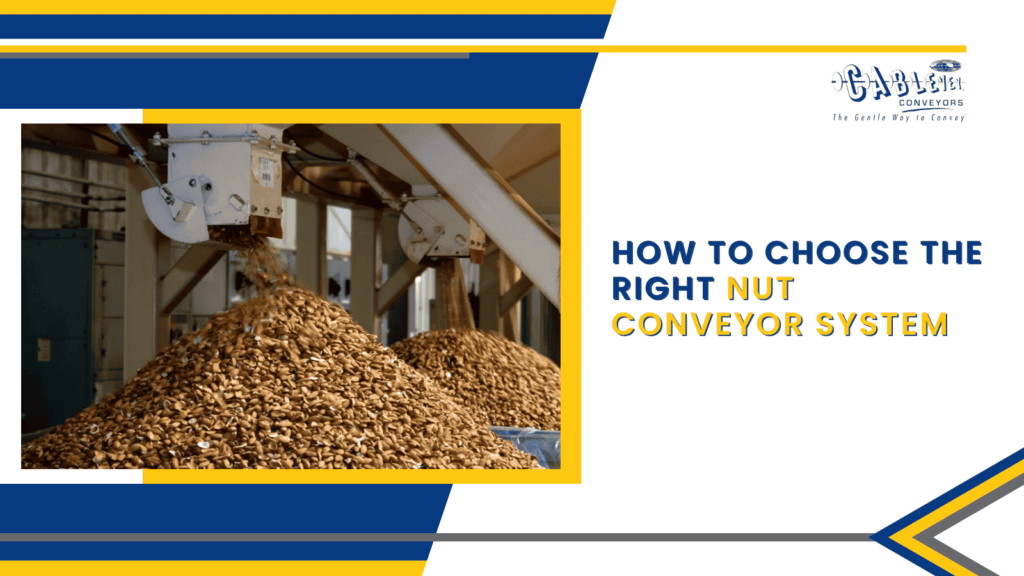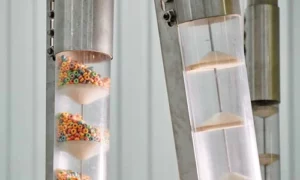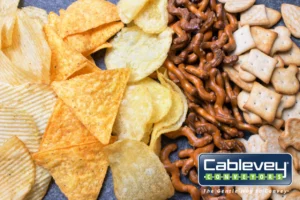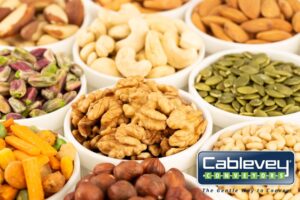In the diverse world of nut production, where almonds reign supreme and Brazil nuts trail not too far behind, the role of an efficient conveyor system cannot be emphasized more. Whether it’s for oil extraction, nut butter creation, or whole nut packaging, choosing the right conveyor is crucial. How to choose the right nut conveyor system, you ask? Dive into our comprehensive guide below to make an informed decision tailored to your facility’s needs.
Why Does the Right Conveyor System Matter?
Nut production and processing facilities either handle a single type of nut or a variety of products for various purposes. These nuts undergo several transformations – they might be converted into oils, transformed into rich nut butter, sold as a whole, or integrated into a myriad of food products.
No matter the size or scope of the food industry operation, an efficient and reliable conveyor system is critical to the success of any nut processing facility. But with so many different types of conveyor systems on the market, choosing the right one for your needs will make a world of difference:
- Enhancing productivity – A well-suited conveyor system integrates into the processing line, reducing downtimes and ensuring a steady flow. When the movement of produce is unhindered and efficient, it directly boosts the overall output of the facility.
- Ensuring the quality of nuts – A custom conveyor belt system ensures that bulk material handling is done carefully, preserving their natural taste and nutritional value.
- Minimizing waste and damage – The wrong conveyor belt system can lead to breakages, spillages, and even contamination.
- Adhering to health and safety standards – Maintaining hygiene and safety standards is paramount in the food industry. Conveyor systems come into direct contact with the produce, making it essential for them to adhere to all health guidelines. A conveyor belt for food designed for nut processing will be easier to clean and sanitize, ensuring the product remains free from contaminants.
Types of Nuts and Their Conveyor Needs
Nuts, while seemingly similar in their hardy exteriors, actually have a wide range of characteristics that necessitate specific handling requirements during processing. A nut belt conveyor system ensures that each nut variety retains its quality and is efficiently processed. Let’s dive into the unique conveyance needs of some popular nuts:
- Almonds are the most popular nuts globally. They come in various sizes and can be quite fragile. That’s why they require almond conveyors that can handle them gently to prevent breakage.
- Walnuts have a hard yet brittle shell that protects a very delicate interior. The industrial conveyor belt for walnuts needs to be robust enough to handle the exterior shell without exerting too much pressure that could damage the inner nut.
- Cashews are soft compared to others and have a unique crescent shape. This requires a conveyor system that provides a smooth and consistent flow, preventing jams or pile-ups that could lead to damage.
- Pistachios are often sold both in shells and deshelled, meaning they need versatile conveyors.
- Hazelnuts can be prone to chipping. They require a conveyance system that can handle them gently.
- Pecan requires conveyors that can accommodate their length without causing them to align in a way that might lead to jams or blockages.
- Macadamias need a robust conveyor system to crack their shells without harming the precious nut inside.
- Pine nuts, because of their size, require a conveyor system with a fine mesh or a closely spaced conveyance mechanism to prevent them from falling through or getting stuck.
- Brazil nuts require conveyors that offer ample space. Their size and unique shape necessitate a system that ensures they are spaced out well to prevent congestion.
In summary, each type of nut has its distinct morphology and fragility, which directly influences its conveyance needs. An optimal conveyor system for nut processing will account for these differences, ensuring efficiency, minimizing damage, and upholding product quality.
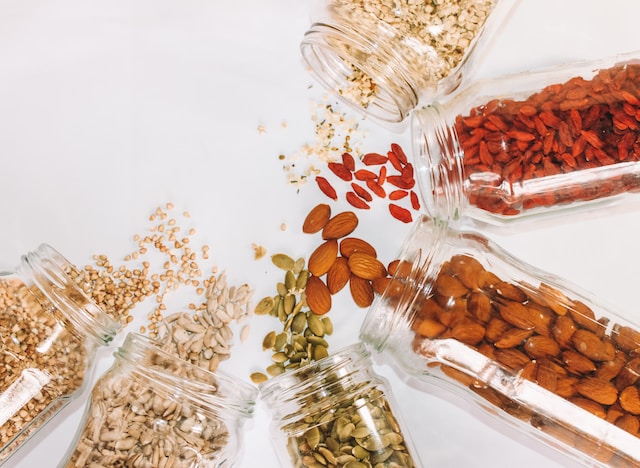
Factors to Consider When Choosing a Conveyor System
When selecting a conveyor system for your nut processing facility, several essential factors can influence the efficiency and quality of your operations.
Type and Size of Nuts
Every nut variety has its distinct shape and size, ranging from small pine to larger Brazil nuts. The differences in size and shape can impact how products move on a conveyor, how they’re aligned, and how susceptible they are to jams or damages. Selecting a conveyor system that can accommodate these variations is essential, ensuring that nuts are handled gently and efficiently.
Product Processing Needs
The conveyor system’s design can vary based on whether you’re processing whole nuts or nut pieces. Nut pieces might necessitate tighter meshing or closer conveyor spacing to prevent small fragments from falling through.
Also, are you handling raw or roasted products? Roasted ones might be more fragile compared to their raw counterparts. The conveyor system should be able to handle these nuances without causing further breakage or loss of quality.
Large or Small-Scale Operations
The size of your operation plays a significant role in the kind of conveyor system you need. Small-scale facilities might require more compact, flexible, and modular systems that can be adjusted based on changing needs. Large-scale industrial operations would need robust, high-capacity systems that can handle vast quantities of nuts efficiently and consistently.
Ensuring Food-Contact Compliance
Adherence to safety standards and quality regulations is paramount in the food industry. Ensure the conveyor system aligns with standards set by the FDA (Food and Drug Administration) and USDA (United States Department of Agriculture), among others.
These standards ensure that the materials used are safe for food contact, that the design prevents contamination, and that there are no zones where particles can get trapped, leading to bacterial growth.
The Raw vs. Roasted – The Bulk Density of Products
For bulk solids, the term “bulk density” is used to describe how much space the material takes up. The bulk density is often expressed in pounds per cubic foot (lb/ft3) or kilograms per cubic meter (kg/m3).
The bulk density of different tree nuts varies between 30-40 lb/ft3. It also depends on whether you’re transporting the nuts raw or roasted. This affects how much can be transported on a given conveyor system.
Throughput Needs to Balance Facility Capacity
Throughput is the amount of material that can be moved through a system in a given period of time. The throughput you need is determined by the capacity of your facility and the speed at which you need to process the nuts.
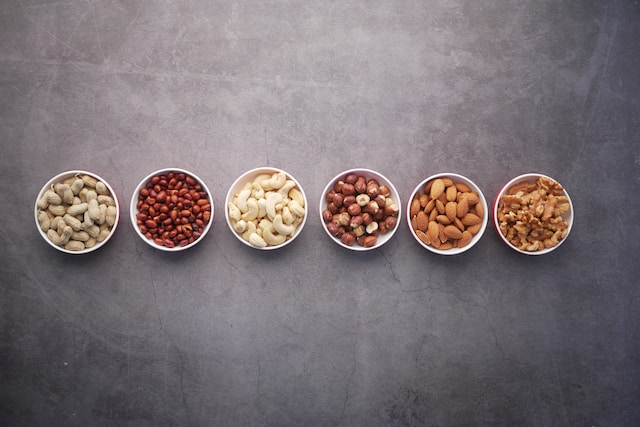
Conveyor Characteristics You Should Look Into
Aside from the nut type and form, throughput, and bulk density, there are other factors that need to be considered when choosing a conveyor system. These include the following:
Floor Space and Facility Layout
Every facility is unique, with varying space constraints and layouts. Therefore, when choosing a conveyor system, it’s important to understand your space. Recognize if you have more horizontal or vertical room and need solutions for sharp turns, multi-floor, or multi-directional conveying.
Space adaptability is another factor you want to consider. Conveyors like the Cablevey tubular drag conveyor, which is modular and can be tailored to fit almost any layout, offer flexibility for future facility modifications.
Automation Level – From Semi to Fully Automated Systems
Automation can revolutionize your operations, providing:
- Enhanced efficiency – Faster and more streamlined processes.
- Cost savings – Reduced labor costs due to automation.
- Safety and consistency – Minimal human errors leading to a consistent product quality.
The choice between semi-automated and fully automated systems should align with your facility’s size and needs. Smaller operations might find semi-automated systems more cost-effective, while larger facilities could benefit more from full automation.
Compatibility With Existing Equipment
Don’t forget about the equipment you already have on-site. When choosing a conveyor system, you need to make sure it is compatible with the other equipment in your facility. Think about all the moving parts in your facility and how they interact.
For example, if you have bulk material handling equipment, how will it be able to interface with other machines? The bottom line is that you need to make sure all the equipment in your facility is seamlessly working together. Otherwise, you risk bottlenecks, inefficiencies, and even safety hazards.
Investment and ROI – Balancing Cost and Quality
A conveyor system represents a significant financial investment. That’s why, when deciding, you need to strike a balance between price and quality.
Think about ongoing costs post-installation, such as energy expenses, routine maintenance, and potential repairs. Remember to also look beyond the initial purchase price. Consider savings from enhanced efficiency, waste reduction, and labor cost savings when calculating your return on investment.
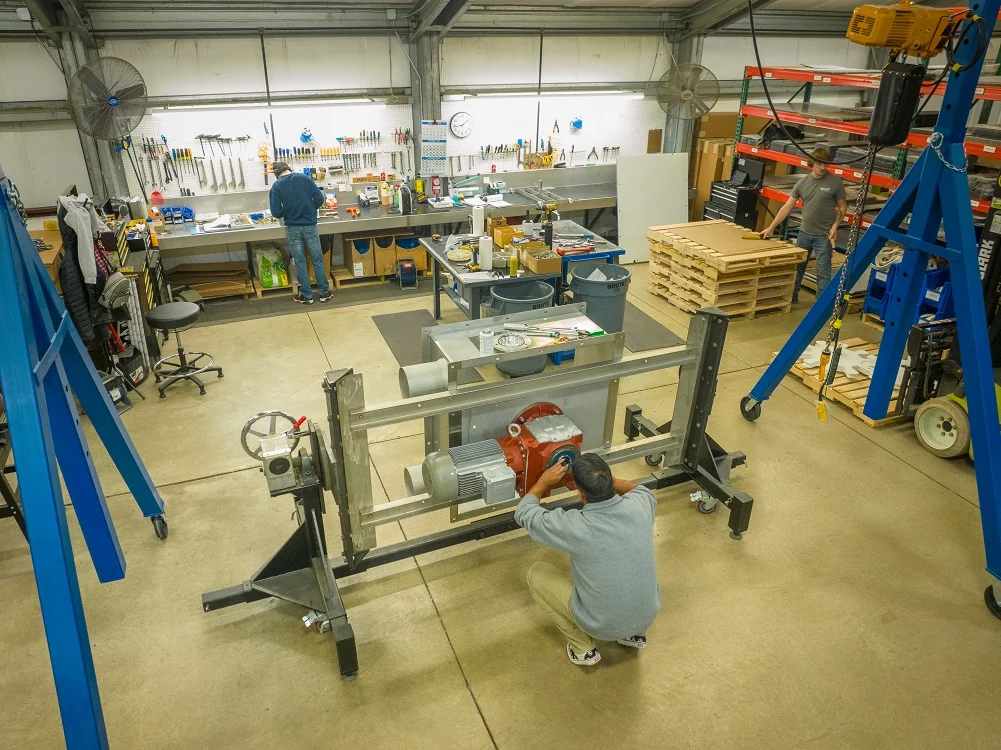
Consult With Experts and Make the Right Choice With Informed Guidance
Choosing a conveyor system is about understanding your current needs and foreseeing future demands and potential challenges. This is where experts come into play. Consulting with professionals ensures you receive advice specifically tailored to your needs, ensuring your conveyor system will serve you efficiently for years to come.
While there are several experts in the conveyor system industry, certain names stand out because of their experience, innovative solutions, and reputation for quality. One such name is Cablevey Conveyors. Renowned for modular designs and adaptability, we’ve become a go-to for many industries, particularly in nut processing.
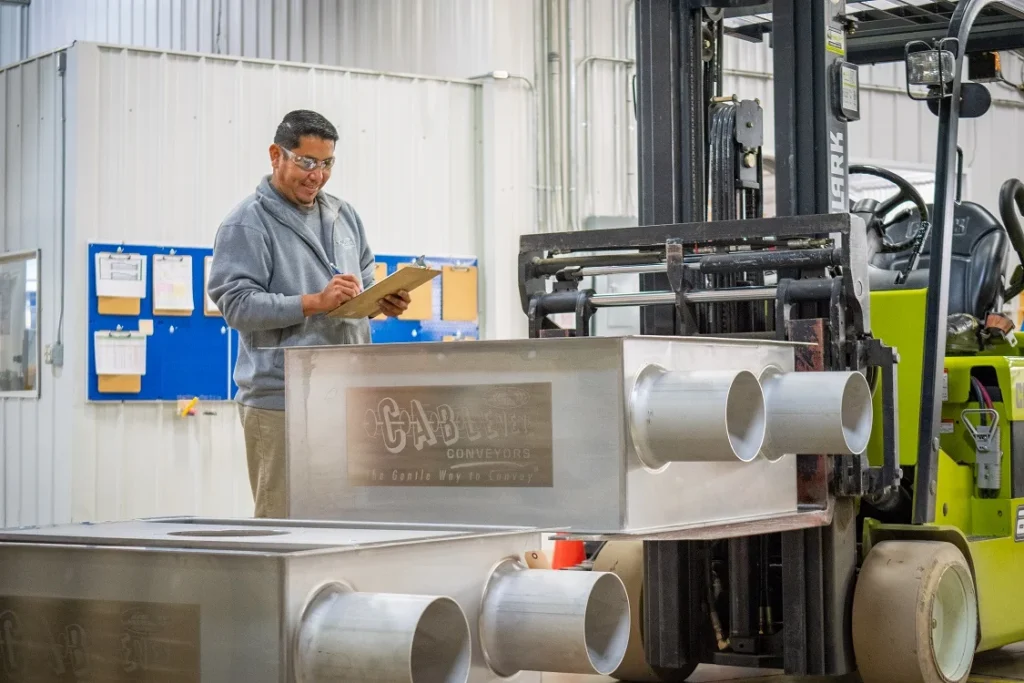
Investing in the Future of Your Facility
The conveyor system you choose today will impact your operations’ efficiency, safety, and profitability for years to come. It’s about meeting current needs and ensuring adaptability and scalability for future demands. Do thorough research, understand your specific needs, and, most importantly, consult with industry leaders.
If you’re considering top-tier solutions tailored to your requirements, don’t hesitate to explore what Cablevey Conveyors has to offer. From a conveyor belt for a warehouse to pneumatic conveyor systems, no matter what you need, we can help you. Remember, the right investment today can pave the way for a future of seamless operations and success. So, get in touch today and learn more!

